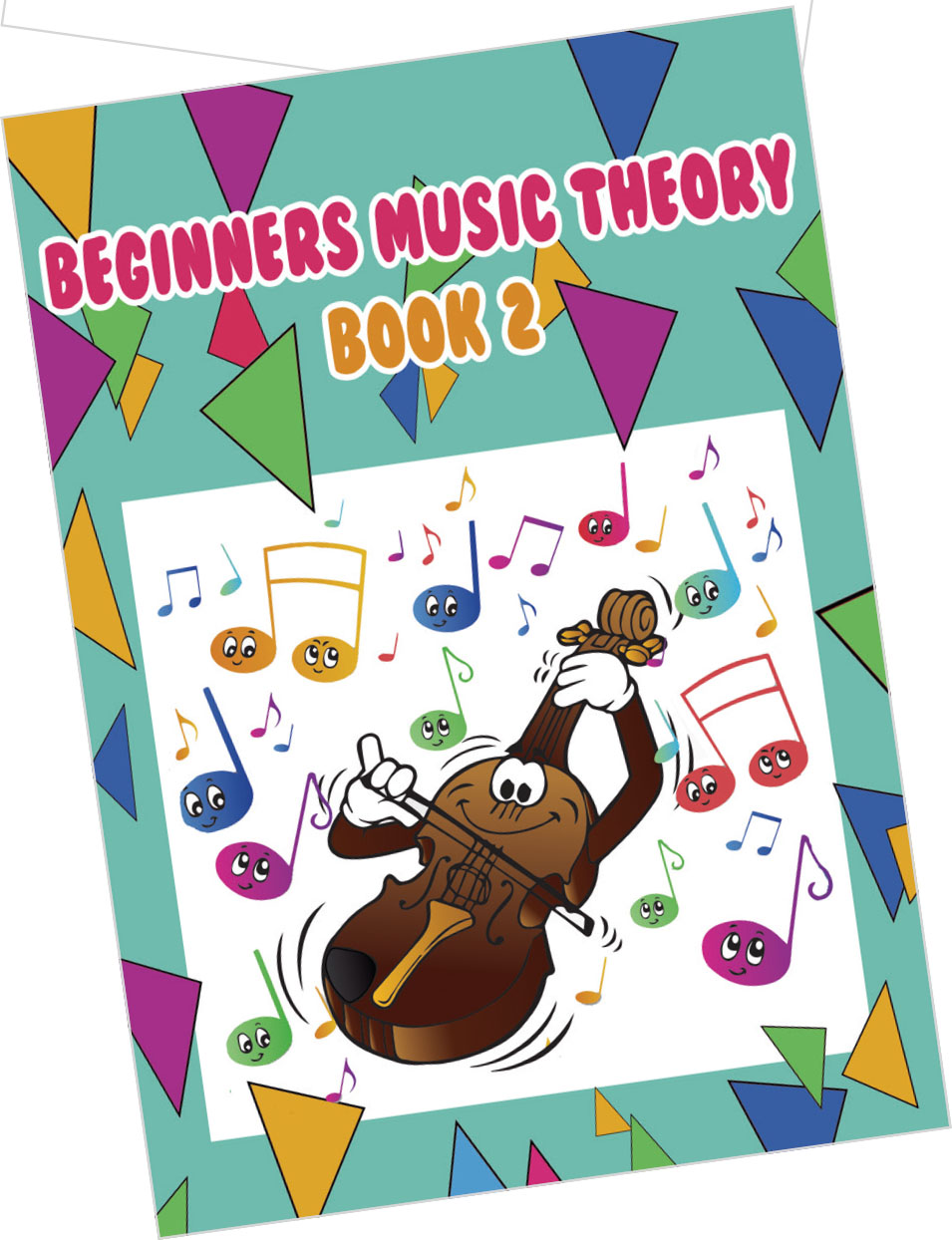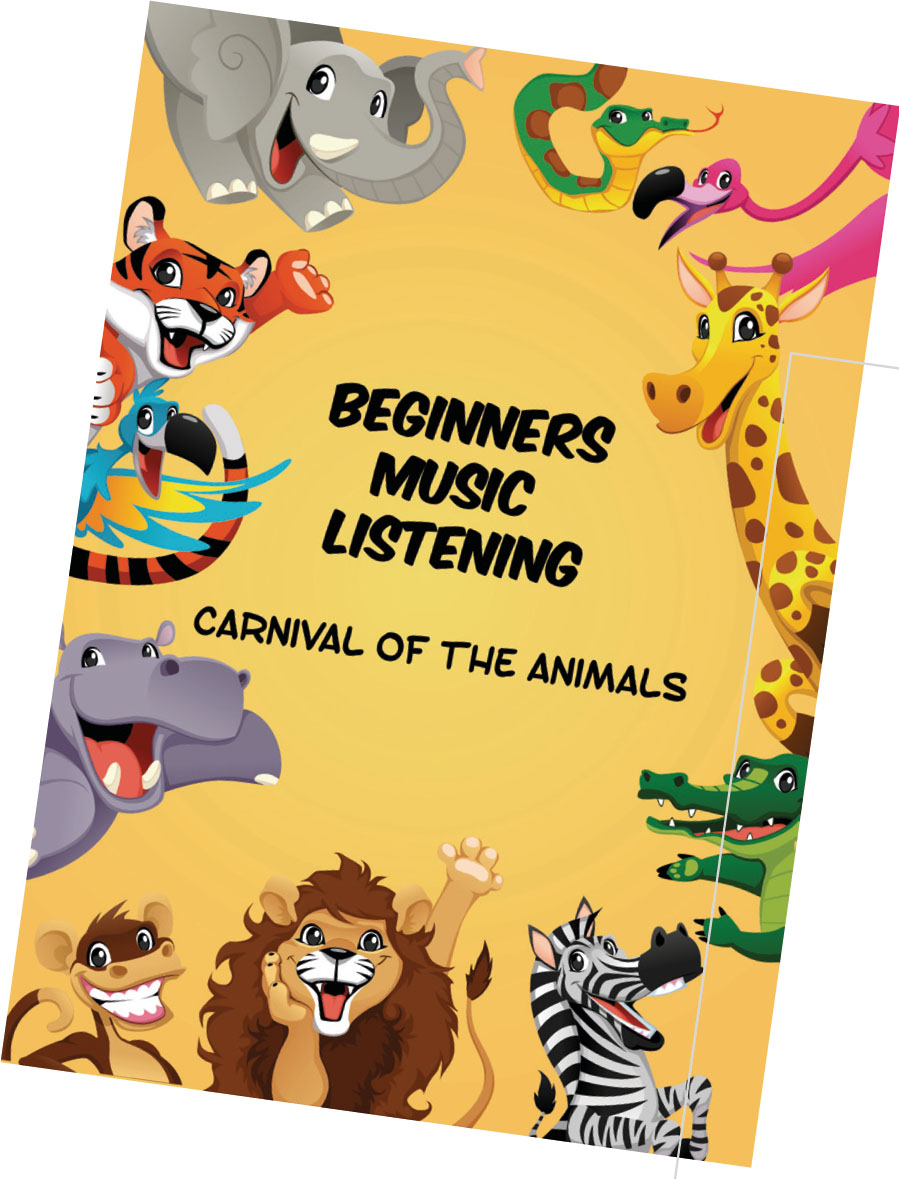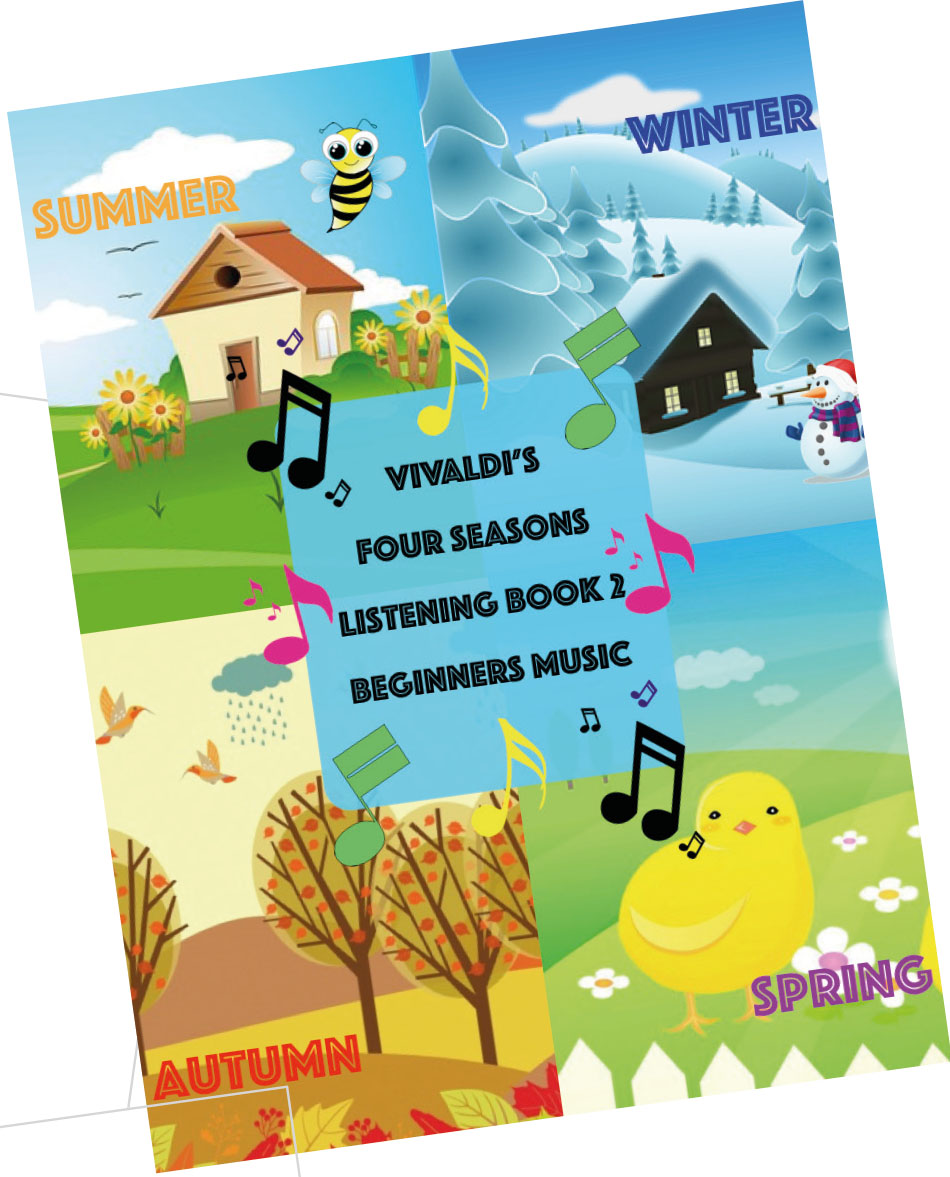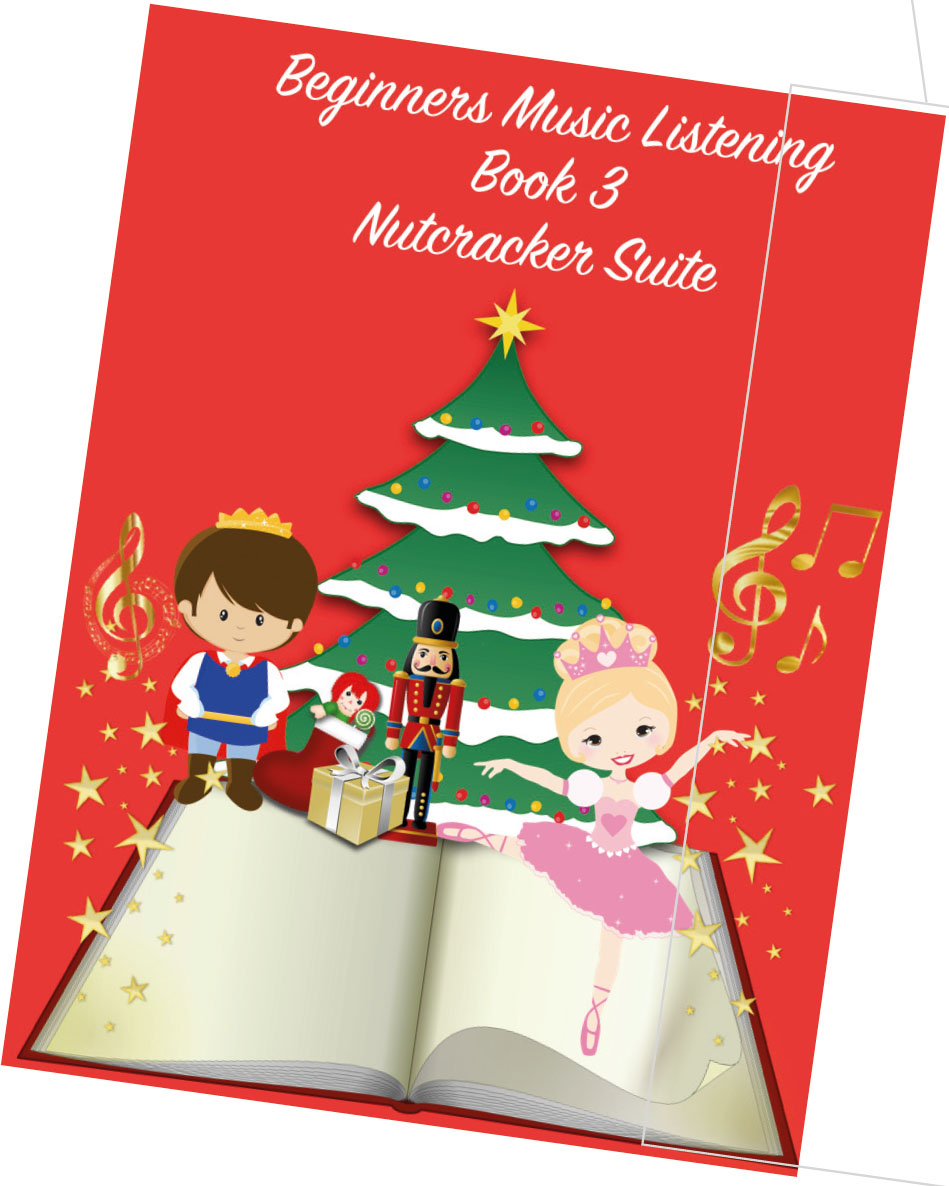
These attractive books are self-published by the musician and pianist, Amy Anne. The books were developed with students who attend the Music Avenue Music School, which is based out of Queen of Angels primary school in Dublin, where the author works. The titles are available to order online from the Music Avenue website, priced at €9.95 (just under £9 plus postage, which is approximately £3 to the UK). There are five books in total. All are in full colour, illustrated, with thick paper and glossy covers. The theory books are also packed with stickers. It was very clear that that the author understands young children and the contents are steeped in her professional practice.
Theory Books
Book One: Beginners Music Theory
This book focusses on three simple concepts – reading notation in the treble clef, note values and instruments (many orchestral). It could be used for any treble clef instrument. Pianists would need this book and Book Two, which includes the bass clef along with the treble and other concepts. Stickers at the back of the book are used to answer some of the questions. Others require students to draw their answers in. There's massive reinforcement throughout the book and concepts are not introduced too quickly (a problem with many beginner theory books). I'm sure children will enjoy colouring in the pictures of the instruments as well, as they familiarise themselves with music education.
Book Two: Beginners Music Theory

This book starts with the bass clef. Notes are introduced and activities used in the same format as the first book. The book introduces the grand stave with activities and a description on how the clefs relate to each other. A number of time signatures are introduced (2/4, 3/4, and 4/4) using familiar music, for example Old McDonald is used to demonstrate 4/4 time.
Illustrations of orchestral instruments to colour come with full explanations of the instrument: ‘A French horn is a brass instrument made of tubing wrapped into a coil with a flared bell. You will find this instrument in the brass section of the orchestra.’ Other popular instruments are included, including a full range of percussion instruments where students can put their own descriptions in if they choose to. Rests are also fully covered with lots of fun consolidation activities like word searches, quizzes and crosswords.
Listening Books
Book One: The Carnival of the Animals

Primary school music specialists and instrumental teachers will find useful material within these pages. For teachers teaching musicianship, this book contains some creative content to explore. Again, the publication is printed in full colour and on high quality paper. It has line drawings to colour in. The first in this series of three publications is on The Carnival of the Animals by Camille Saint-Saëns. Each movement is introduced in turn, alongside an explanation about instruments and time signatures used. There is also an exploration of other characteristics of the music like chromatic scales and dynamics, tempo speeds and how the music relates to the animal it is describing. Questions asked include ‘Which instrument do you hear being played first?’ and ‘Can you march like a lion?’ Intervals used by instruments are detailed, along with orchestration information like ‘What instruments play the very fast passages in the high register?’ The scores themselves are included so that a student can helpfully see all the grace notes in ‘The Kangaroo’ and consider how this relates to the animal the music is composed for. There's a balance of useful factual information along with questions for students to answer. Some of the style of writing about the orchestration is a little unusual but still easy to understand.
Book Two: Vivaldi's Four Seasons

This book requires greater in-depth listening by the student and has a clearer structure than the first book. It starts with a general introduction on the concerto, with information about the composer, instrumentation and the variety of tempos for the individual movements. Each movement is presented in turn with details of the sonnets (poems) that accompany them. To make the music of the season being explored more obvious, each is printed on a different colour paper – green for spring, blue for summer, yellow for autumn, and purple for winter. Questions are asked about how the music relates to the sonnet poem accompanying the musical season. For example, the largo in ‘Spring’ has the accompanying sonnet words: ‘On the flower strewn meadow with leafy branches rustling overhead, the great herder sleeps, his faithful dog beside him.’ The children are then asked: ‘Does the music sound restful, like someone is sleeping?’ Specific Italian dynamics are listed along with Italian tempo terms, and activities are included to help students learn them. The presentation is for a young child but my own 16-year-old daughter found the information just as engaging as my Key Stage 2 students at school. Some listening pages to complete relate to emotions, colour and nature. Incredibly useful full orchestral score extracts are again included so students can see the architecture of the music.
Book Three: Nutcracker Suite

This book moves up a level again. It is specifically detailed and does include (for the first time) a full contents page. The design of this book is different, with snazzy titles and more varied illustrations including line drawings, full colour pictures and cartoons. The book begins with details about Tchaikovsky's life. It provides the history and background to the work. The orchestration is described and the plot and story explained. The music is then helpfully broken down into the different musical sections from ‘March of the Toy Soldiers’ to ‘Dance of the Reed Pipes’ and from the ‘Russian Dance’ to the famous ‘Dance of the Sugar Plum Fairy’. Students are asked about instruments they hear, to identify time signatures and what tempo markings are being used, along with emotionally responding to what they hear. Again, there's the opportunity to colour in some illustrations.
Some final thoughts
Having been so complimentary is there anything I'd change? Well, perhaps it would be nice for Amy Anne to include her name on the books? A summary of what is included and information about her music school on the back cover could be useful. These are minor critiques and I think Amy Anne has produced books that are very engaging for children with music at the heart of their pages. Well done!
musicavenue.ie








